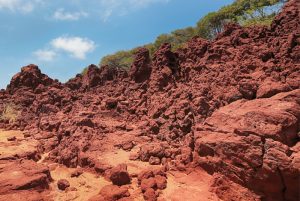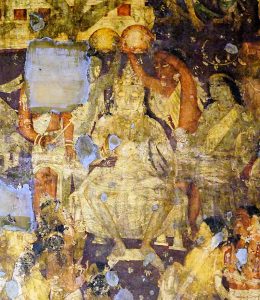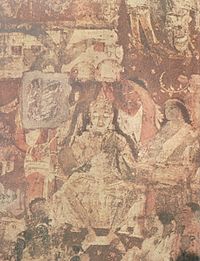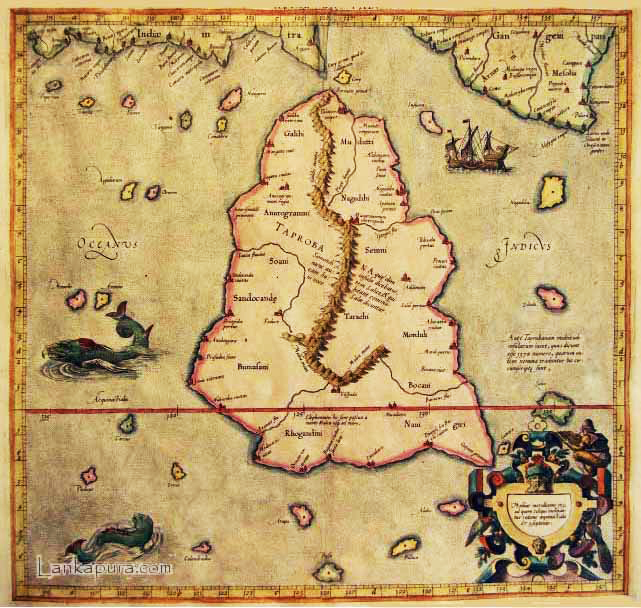How the world’s 3rd oldest still existing nations state came to be…
-A story based on our history including facts I learned from my childhood-
Let’s go back 2700 years (9th century B.C); about 600 years after the decline of the Ravanian Empire. This was the Pre-Sinhalese Age (9th century BC-543 BC)
Migration, Settlements & Diversity
After “Aryawartha”: Arrival of Aryans to Sindhu-Ganges planes, foundations were laid for the establishment of 16 great Aryan states, starting the Vedic age in India. They further came to Deccan, crossing mountains of Vindya in the South and later migrated to the southern island of ‘Heladeepa’ well known among traders due to their voyages. It is obvious that when they came here, there were Indigenous Hela clans, named Yakkha, Naga, Deva & Raksha(clan of Ravana).
Among the Aryans that arrived, there were warriors who invaded the Helas and tried to build their kingdoms here and waged wars, settlers that became acceptable citizens & married locals and traders who settled temporarily. This resulted in the creation of 3 diverse groups of people.
- Helas – native clans who had independent kingdoms & royal houses of their own.
- Kingdoms of Sirasawasthupura & Mahiyangana of Yakkhas.
- Kingdoms of Kalyani & Nagadeepa of Nagas
- Kingdom of Samanthakutha of Devas
- Helaryans – Mix of Hela and Arya clans. Very rarely given high positions in native royal houses. They dominated the field of inland and foreign trade. They were not as privileged as native aristocrats but owned a considerable wealth & power. Yakkhas were the least to mix with Aryans while Nagas and other clans remained friendlier with them.
- Aryans – Some of them had been welcomed as citizens by natives but majority lived just as foreigners. Natives were still reluctant to embrace their culture due to hostile attitude on pure Aryans.
Age of Conflicts (543 BC-437 BC) – Invasion, instability & cultural transformation
Now we are on a full moon day in the month of May in 543 BC. Several earthquakes & cyclones had occurred in the land & ocean surrounding the Indian subcontinent as it was the day of Parinirwana of Gauthama Buddha. In such a storm, sailed an Aryan ship of outlaws to the north-western coast of Heladeepa, to the point kudiramale which has reddish-brown/copper colored soil even today, headed by the well known Prince Vijaya.


Vijaya belonged to the Bengali-Aryan Singha clan. His father, Singhabahu was the 1st in the dynasty which is extinct now, that built Singhapura in West Bengal (Wanga rata), the modern day Gujarat.
With the help of Kuweeni: a lady of the royal house of the Yakkha clan of Sirasawasthupura, whom he married, Vijaya killed the royals in a night ceremony at Sirasawasthupura including the Yakkha king, “Kalasena” and other heirs to the throne. This made the kingdom of Sirasawasthupura collapse into many tiny independent Yakkha and other native states, Aryan states & a considerably larger & more powerful Kingdom of Thammannawa by the infant royal house of Singha. Upathissanuwara was named the capital of Thammannawa.


The above transformation of power made significant changes.
Major Changes in Socio-political and economical spheres of Heladeepa
Politically, many new Aryan city-states were built. eg-: Anuradhagama, Vijithagama, Upatissagama etc. as led by Singha royals, the companions of Prince Vijaya, with the assistance of the Kingdom of Thammanna, making it the most powerful kingdom among other independent kingdoms of Heladeepa. Privileges and powers of native aristocrats of Sirasawasthupura were amended with the rise of the new ruling class of Helaryans & Aryans. Some of the natives insisted on assisting the new system while some fled back to other native Kingdoms. Various groups of natives (especially Parumukas: village leaders) secretly organized themselves to gain the power back. Chintraraja & Kaladewala were such Native aristocrats who showed loyalty to Singhas but secretly waited to overthrow them. Nearly always, there were ethnic conflicts within the Kingdom of Thammanna & borders. There were Aryan dominations, Native dominations and some other territories where all men were considered to be equal.
When considering the economy, though there were conflicts, foreign trade developed due to Singhas’ relationships with the North Indian Kingdoms. The self-sufficient tank based “Wapi” civilization of the natives gained more assistance from Aryans’ river-valley civilization. In the field of Education, Post Vedic literature, philosophy, politics and Astrology became popular in Aryan dominating territories.
It is my belief that the foundation of the modern horoscope; a combination of Nakath known by Yakkhas & the zodiac of the 12 constellations was most probably introduced in Babylon and had reached India during this time.
Sanskrit and Prakrit languages flourished and started their influence on Hela language(s), for the formation of modern day Sinhalese language. Vedic houses of learning (Guru Gedara) started for Aryans & the noble Helaryans. That influenced native education centers and scholars in a dramatic way. For an example, Hela Diwa Maha Aduru was known in later works as Brahmin Pendula. He was a native or Helaryan, not a Vedic Brahmin having a magnificent knowledge on Vedas.
When considering the religion, culture and society, Post Vedic Gods including Indra, Waruna, Agni, Yama who had reached here before, became privileged at royal houses and started being popular among the common. However, Vedic type Yaga-homa (black magic) did not reach the natives much since they had their own sacrificial & black magic rituals, and were practiced only by royal Aryans. Buddhism was considerably known in some native states, especially Naga kingdom of Kalyani, since Lord Buddha had visited there and preached. But Dhamma had not been embraced well by the natives. The reason might have been the Yakkhas. Although Nagas & Devas accepted Buddhism, Yakkhas had a hostile attitude towards it as it prohibits sacrificial rituals and due to the myth that Buddha made them fled away from Mahiyangana on his first visit. The native tradition of burying the dead (pomparippu & ibbankatuwa archeological sites) started changing into a burning ritual followed by the burial of ash. Finally burning and putting ash to flowing water came into practice, due to Aryan influence.

In the proceeding article of this series we will discuss the significant and unavoidable changes that occurred here in the form of a cultural revolution, altering the history of Sri Lanka, laying foundation for a unified island.
Image Courtesy:
https://www.google.lk/
http://srilankaimagegallery.blogspot.com/2017/02/ibbankatuwa-megalithic-tombs.html
https://en.wikipedia.org/wiki/Prince_Vijaya,
http://www.sundaytimes.lk/101017/Plus/plus_24.html)

